The easiest and most successful way to build a championship team is through the draft. Drafting well can make a NHL general manager celebrated as one of the league’s best, while drafting poorly can put him in a fast lane to the pink slip.
St. Louis Blues’ GM Doug Armstrong is said to fall decisively into the first camp, one of those GMs whose resume has been built by drafting well. We set about to examine those claims with our series revisiting his drafts:
- 2010: Two stars arrive
- 2011: Second round success
- 2012: A diamond in the rough
- 2013: A year to forget
- 2014: Success after success
- 2015: Dunn and done
- 2016: A lot of promise
- 2017: Stanley Cup foundation
- 2018: A Hobey Baker winner and more
As we get closer to the present day, of course, we will have to project player values more and more, but with the 2016 Draft, we already have a lot of clarity about whom the Blues drafted and where they might be going.
First Round
Tage Thompson, C (Connecticut Huskies, NCAA), #26
Under Armstrong, the Blues have made a habit of targeting the players they want and making sure they get them. They did that once again with this pick, trading up from 28 to 26 to draft Tage Thompson out of the University of Connecticut.
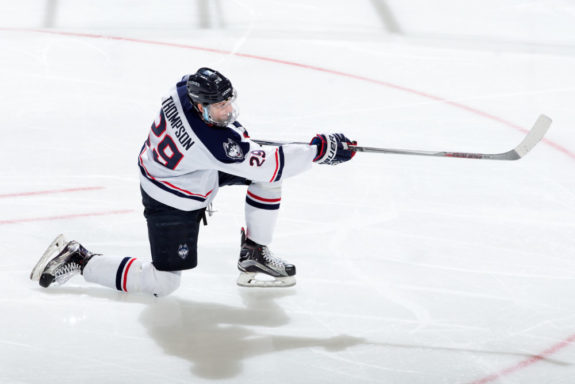
Thompson was a tall center, standing 6-foot-5, and he had a hard shot and a high hockey-IQ, something the Blues value very highly. They valued those qualities highly enough to surrender their own first-round pick and a third-round pick, one that the Blues had originally acquired from the Washington Capitals in the T.J. Oshie trade, back to the Capitals to secure this selection.
Even so, Thompson’s tenure with the Blues was relatively short-lived. He played one season with the big club, moving up and down between St. Louis and the American Hockey League (AHL) before the Blues included him in the package for Ryan O’Reilly from the Buffalo Sabres.
Unfortunately, Thompson has struggled to establish himself with the Sabres, deepening the wound of an already lopsided trade. He managed just 12 points and was minus-22 in 65 games in his first season in Buffalo, and his second season was even less successful. He played just one NHL game and 16 AHL games before shoulder surgery set him back for the remainder of that campaign.
Thompson is just 22, but it looks possible that he will go down as a first-round bust. Of course, for Armstrong, there is an argument that he maximized the value of this pick by trading the prospect for a future Conn Smythe winner when he had the opportunity. Better yet, he traded Thompson rather than losing a more promising youngster like the next one on this list.
Middle Rounds (2-4)
Jordan Kyrou, F (Sarnia Sting, OHL) #35
The Blues surprised many of their fans when they traded long-time goaltender Brian Elliott to the Calgary Flames to acquire this pick. They committed to moving forward with Jake Allen and acquired a special player in the process.
Kyrou had an impressive draft season with the Sarnia Sting, recording 51 points in 65 games, and adding seven more in seven postseason contests. But it was after his draft that he really began to establish himself. The following season, he collected 94 points in 66 games. Then, he separated himself from his peers in 2017-18.
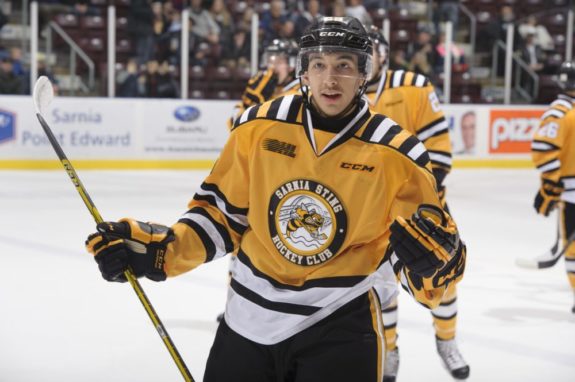
In that season, Kyrou led all OHL right wings in scoring, with 109 points in 56 games, just under two points per game. That earned him the Jim Mahon Memorial Trophy, which honors the top-scoring RW, and he was also selected as the OHL’s Most Outstanding Player, winning the Red Tilson Trophy. He also achieved one of junior hockey’s most treasured accomplishments, bringing home a gold medal for Team Canada at the 2018 World Junior Championship, along with fellow Blue Robert Thomas.
In his one full season in the AHL, Kyrou had nearly a point per game, with 43 in 47 contests. He made his NHL debut in the 2018-19 season, scoring his first goal. He got more of a look the following season, and even made his NHL postseason debut, playing in five games and not looking out of place. With the injury to Vladimir Tarasenko, 2020-21 is looking like it could be a breakout campaign for Kyrou.
Losing Elliott was tough for many fans to swallow, and until the recent 2019 arrival of Jordan Binnington, it seemed to many like it might be a mistake. But if Kyrou becomes anything like the player he is expected to be, it may be looked back on as one of the better trades in the team’s history.
Evan Fitzpatrick, G (Sherbrooke Phoenix, QMJHL), 59
Evan Fitzpatrick isn’t the most famous goaltender taken in the second round of the 2016 NHL Draft, considering Carter Hart was selected just 11 spots before him. But the Blues took a shot on another goalie in the middle rounds, where Armstrong often likes to try and swipe a netminder.
Fitzpatrick had a rough season and a half with the Sherbrooke Phoenix before being traded to the Acadie-Bathurst Titan to close out his junior career. There, he posted a 2.24 goals-against average (GAA) and a .915 save percentage (SV%), which he improved to a 2.10 GAA and a .925 SV% in the postseason. That performance helped the Titan win both the QMJHL Championship (the President’s Cup) and the Memorial Cup.
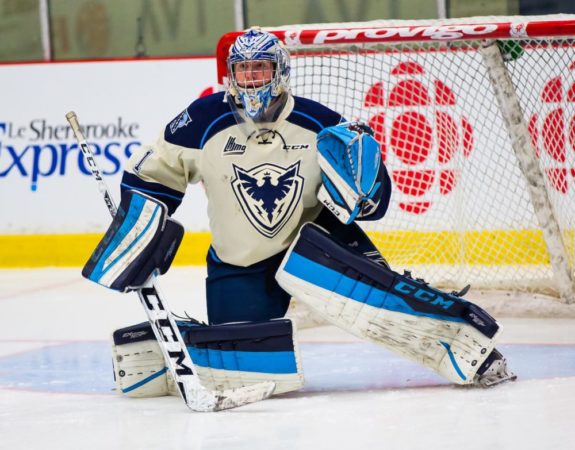
His first season at the professional level was rocky, as he was shifted back and forth quite a bit between the AHL San Antonio Rampage and the ECHL Tulsa Oilers. He spent all of 2019-20 in the ECHL at two stops, and had putrid stats, including a 4.73 GAA and a .838 SV% in five games with the Brampton Beast. Blues fans know all too well that goaltender progression is never straightforward, and that anything can happen with young backstops. But Fitzpatrick has a lot to prove before he gets a look at a higher level.
Tanner Kaspick, C (Brandon Wheat Kings, WHL), #119
The Blues wouldn’t pick again till very late in the fourth round. They had a third-round pick from the Capitals, which they traded to move up and draft Thompson, and they’d surrendered their own third rounder to the Sabres in the package with which they obtained Ryan Miller (that pick was later traded to the Florida Panthers).
With their fourth-round pick, St. Louis selected Tanner Kaspick of the Brandon Wheat Kings, a storied franchise in the Western Hockey League. In the two seasons following his draft, he would be roughly a point per game player, and would go on to captain Brandon in his final season with the team. He began his professional career in 2018-19, with both the Rampage and Tulsa.
In 59 games with the Rampage in 2019-20, he had just 14 points, and questions rightfully linger about whether he can be a scoring contributor at the highest level. Even so, with his character and leadership, Kaspick has a shot to become a bottom-six center at the NHL level, whether that’s with the Blues or another organization.
Late Rounds (5-7)
Nolan Stevens, C (Northeastern Huskies, NCAA), #125
It wouldn’t be long before the Blues were picking again, as they had added a pick early in the fifth round when they traded Jordan Leopold to the Columbus Blue Jackets. With the pick, they selected Nolan Stevens, forward for the Northeastern Huskies and younger son of longtime NHL player and coach John Stevens.
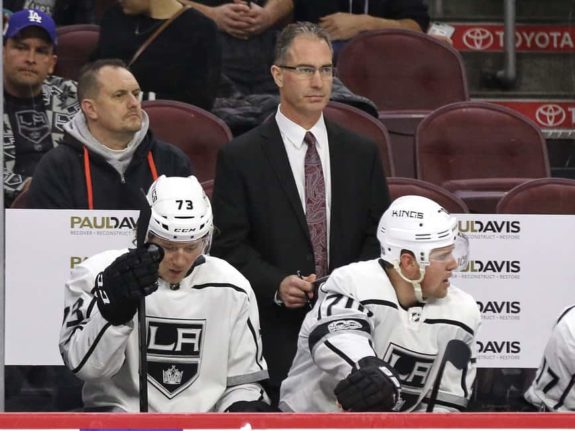
Like Kaspick, Stevens would go on to be a point per game player at Northeastern, and, also like Kaspick, he would captain the team in his final season. He also made his professional debut in 2018-19 with the Rampage, where he played in 59 games and scored 18 points. The pair have very similar ceilings and leadership qualities. But Stevens may have taken a step forward in the 2019-20 season, leading the young players on the AHL squad in points. At 24, Stevens is on the older side for a prospect. But he’s still got a chance to contribute at the top level.
Conner Bleackley, C (Red Deer Rebels, WHL), the #144
The Blues traded a 2017 fifth-round pick to the Chicago Blackhawks to acquire this pick, which was originally property of the Panthers. With it, they selected Conner Bleackley, one of those rare players who was being drafted a second time.
Bleackley was originally selected by the Colorado Avalanche in the first round in 2014. But he struggled to catch on, suffered an ill-timed injury, and was never offered an entry-level contract. His rights were traded to the Arizona Coyotes, and they chose to leave him unsigned and take a compensatory pick.
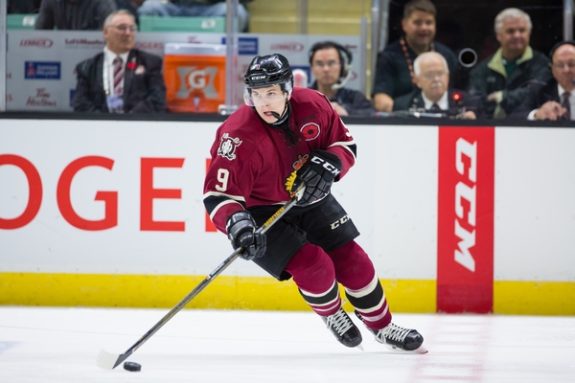
The Blues took a shot on the upside by drafting Bleackley here, giving him a chance to redeem himself. At this point, his chances of making an impact at the NHL level seem like a long shot, but with 38 points in 40 games in the ECHL in 2017-18, there is still something left of the talent that once made him appealing as a late first-round choice. The Blues did not tender him a qualifying offer in 2019, leaving him free to sign as a free agent with the ECHL Idaho Steelheads. He played the entirety of that season at that level.
Nikolaj Krag Christensen, F (Rodovre Mighty Bulls, DEN), #209
The Blues’ own fifth-round pick went to the Edmonton Oilers when they acquired Anders Nilsson, and their sixth-round pick went to the Toronto Maple Leafs when they grabbed Olli Jokinen as a depth forward. They were left with just two picks at the end of the seventh round, their own, and the Pittsburgh Penguins’ seventh, which they acquired as part of the Ian Cole/Robert Bortuzzo trade.
With their pick, they chose Nikolaj Krag Christensen, a Danish forward. He has put together a distinguished career at the international level, representing his nation for three consecutive seasons (2016-2018) at the World Junior Championship. He has never left Europe, though, and does not seem destined for the NHL.
Filip Helt, LW (Litvinov-jr., Czech Junior League), #211
With the final pick in the 2016 NHL Draft, the Blues selected Filip Helt, a Czech forward. Like Christensen, he has gotten some opportunities to represent his country, but he also has never left Europe and seems unlikely to play in North America.
Final Grade: Realized, C+; Potential, A-
We need to know more to totally grade this draft, but we know a few things for certain. First, even though Thompson is no longer with the Blues, Armstrong used his first-round pick to add a cornerstone player to his forward group. Second, the team added a high quality goaltending prospect and a borderline-elite forward prospect in round two. Third, they still have a few players in the system who could develop into decent depth pieces.
How one grades this draft depends largely on whether one weighs O’Reilly’s value as part of the equation. Without him, it looks more and more like a draft that hinges on the talent of just one player, although, with Kyrou’s very high skill level, that could be a game-changing player in the long run.
If you count the value of flipping Thompson for a future Conn Smythe and Selke Trophy winner, then the impact of this draft soars through the roof. It’s hard not to consider that, as weaponizing prospects to trade for immediate value is certainly part of the appeal of building a strong farm system. In the end, we’ve gone for a middle road. The value of this draft will still largely rest on just how good a player Kyrou can become.